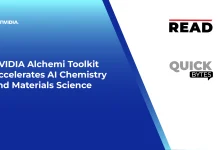Rapid7, a leading provider of threat detection and exposure management solutions, announced the launch of Vector Command Advanced, a major enhancement to its continuous red teaming and exposure validation service. The new offering extends capabilities beyond external testing, enabling organizations to meet compliance mandates through internal penetration and segmentation testing while validating the effectiveness of internal controls and lateral movement defenses.
“Security leaders today are looking for outcomes. Ultimately they need to be able to demonstrate that their controls work, they’re reducing risk, and they can pass the audit. Vector Command Advanced delivers that proof,” said Craig Adams, chief product officer at Rapid7. “Combined with the deep visibility of Surface Command and the scalable, integrated power of our Command Platform, Vector Command Advanced underscores how automation, integration, and human-led red teaming can transform how organizations manage their attack surface and meet growing regulatory pressure.”
With Vector Command Advanced, organizations gain continuous, expert-led validation across both external and internal environments. By combining always-on red teaming with internal network and segmentation testing, the service helps enterprises achieve compliance with frameworks such as PCI DSS, ISO 27001, and NIST, while exposing real-world attack paths that cross traditional security boundaries.
Also Read: Unstructured.io Joins Palantir FedStart to Advance Federal AI Data Solutions
Through adversary emulation and mapping exposures to critical business systems, Vector Command Advanced enables security teams to prioritize remediation where it has the greatest impact-while also providing clear, auditable evidence to satisfy regulatory and governance requirements.
These capabilities align with Gartner®’s definition of Adversarial Exposure Validation (AEV): “Technologies that deliver consistent, continuous and automated evidence of the feasibility of an attack. These technologies confirm how potential attack techniques could successfully exploit an organization and circumvent prevention and detection security controls. They achieve this by performing attack scenarios and modeling or measuring the outcome to prove the existence and exploitability of exposures.”




